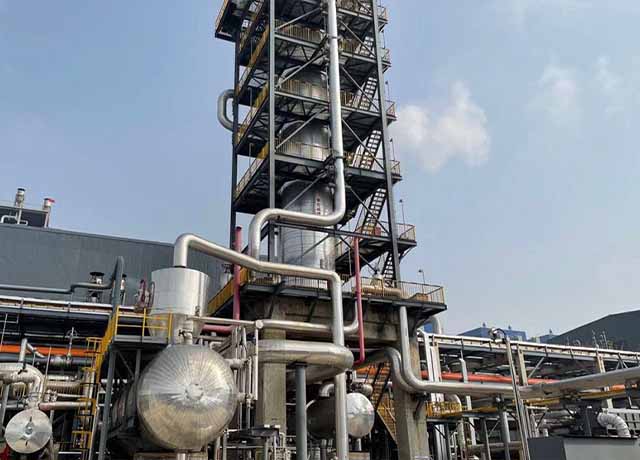Fixed Bed Catalytic Device
The fixed bed catalytic device is also called a packed bed reactor. Catalytic reactor filled with solid catalysts or solid reactants to achieve a heterogeneous reaction process. The solids are usually in the form of granules, with a particle size of about 2-15mm, and pile up into a bed with a certain height (or thickness). The bed is stationary, and the fluid passes through the bed to react. The difference between it and fluidized bed reactor and moving bed reactor is that the solid particles are in a static state. Fixed-bed reactors are mainly used to realize gas-solid phase catalytic reactions, such as ammonia synthesis towers, sulfur dioxide contact oxidizers, and hydrocarbon steam reformers. When used in gas-solid phase or liquid-solid phase non-catalytic reactions, the bed is filled with solid reactants. A trickle-bed reactor can also be classified as a fixed-bed reactor, in which gas and liquid phase flow down through the bed in parallel, in a gas-liquid solid phase contact.

Classification of fixed-bed catalytic devices: There are three basic types of fixed-bed reactors:
①Axial adiabatic fixed-bed reactor: The fluid flows through the bed from top to bottom in the axial direction, and there is no heat exchange between the bed and the outside.
② Radial adiabatic fixed bed reactor: The fluid flows through the bed in the radial direction, centrifugal flow or centripetal flow can be adopted, and the bed has no heat exchange with the outside. Compared with the axial reactor, the radial reactor has a shorter fluid flow distance, a larger flow channel cross-sectional area, and a smaller fluid pressure drop.
(The above two types are adiabatic reactors, which are suitable for occasions where the reaction heat effect is not large, or the reaction system can withstand the temperature change caused by the reaction heat effect under adiabatic conditions.)
③Tube type fixed bed reactor: It is composed of multiple reaction tubes in parallel. The catalyst is placed in the tube or between the tubes, and the heating medium flows through the tubes or inside the tubes for heating or cooling. The diameter of the tube is usually between 25 and 50 mm, and the number of tubes can be as many as tens of thousands. Tubular fixed-bed reactors are suitable for reactions with large reaction heat effects. In addition, there are reactors composed of the above-mentioned basic forms in series, which are called multi-stage fixed-bed reactors.
